Editor’s Note: This post is written by a member of LTV’s sponsored content team, The Leisure Explorers. Do you own a Leisure Travel Van and enjoy writing? Learn more about joining the team.
Selecting a bike rack can be a daunting experience. With so many different options and brands available, sorting through all your potential choices can be quite time-consuming. Many factors can come into play when narrowing down what bike rack will work best for you. Having been a cyclist for over 30 years now, I’ll try to share some of my experiences with you and more specifically, how it relates to selecting a rack for your RV.
Criteria to think about to help you narrow your search are:
- Type
- Budget
- Weight
- Ease of use
- Security
- RV Certified
I’ll touch specifically on a few of these topics to hopefully assist you in determining the best bike rack for you.
Type
Many different types of racks are on the market these days. Everything from roof-mounted racks, hitch racks, horizontal and vertical styles to even enclosed bike carriers or cargo racks. Before owning an RV I always used a roof rack mounted to my vehicle. These racks are great options for a car, but can be difficult for an SUV and definitely not suited to the height of an RV. While some of us travel with a toad vehicle, this could potentially be an option for you. The great thing about a roof rack is that if you do have a toad, you could easily drive your bikes to a more appropriate location to start your ride. With that being said, roof racks are typically designed to carry lighter, non-motorized bikes, so lifting the bike off and on the rack is not an issue. If you happen to travel with an SUV as your toad vehicle, an inside bike fork mount could also be an option (again, this is assuming you are able to lift the bike to place inside the vehicle).
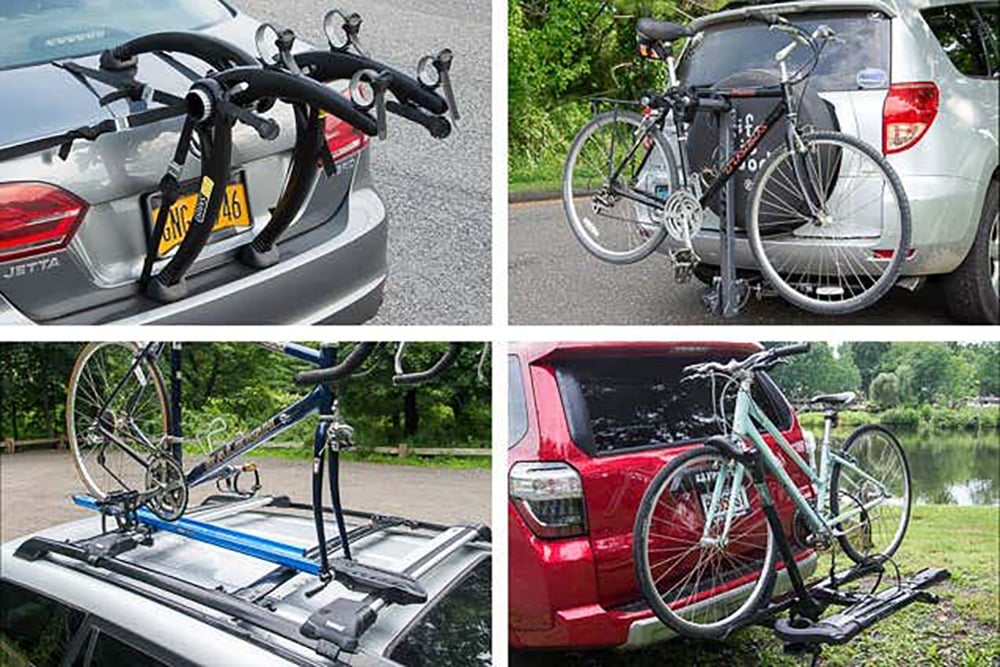
I believe for the audience of this blog, most of us will be looking at some type of hitch mount. There are many options and brands when it comes to hitch-mounted racks. If you have a toad vehicle, the hitch-mounted rack could also be attached to your toad versus directly to the RV. In our case, I’ve used three different types of hitch racks since owning our 2016 Unity. Our first bike rack was a cargo rack with bike-specific mounts added to it, which allowed us the convenience of carrying two bikes (we did have to un-mount the front wheels, but also had wheel carriers attached to the rack so that bikes and wheels were fully secured). This also provided the option in the event we didn’t bring the bikes to carry other items on the cargo rack.
I eventually got rid of the cargo rack option and switched to a true hitch rack capable of carrying 2-4 bikes, with the additional rack add-ons. Hitch rack options are probably the most popular and many different brands and styles exist. This rack has been our primary rack option and works very well; it’s light and easy enough to move from the RV to our SUV, and can be folded upright when not in use. This type of rack also supports all bike types, and is even capable of managing the weight of electric bikes (though each brand will need to be evaluated separately to determine its weight load capabilities). When considering a hitch rack there are primarily two options, platform-style and hanging (mast-style).
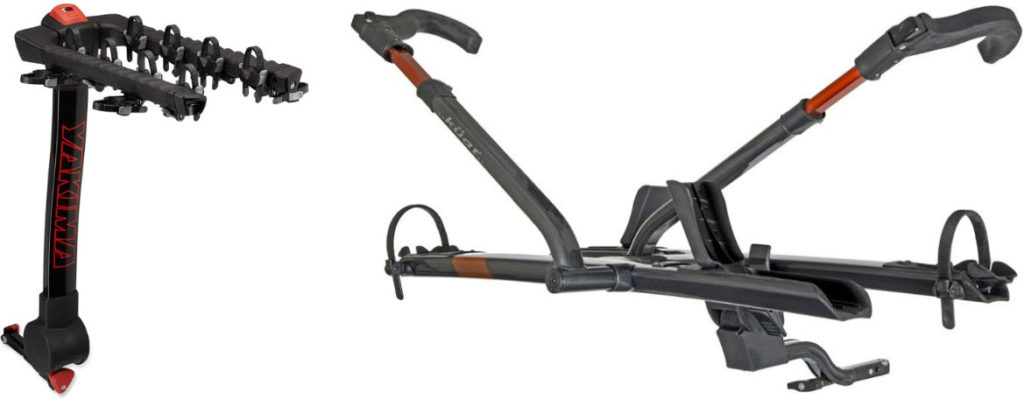
Typically, the mast-style is less expensive and provides a hanging system of sorts for your bikes. This means that the bike may be suspended on the rack via one or two contact points. The typical issue with these types of racks is that the bike can sway, and you may need to take extra precautions to prevent the bikes from swinging into each other and/or your vehicle. I prefer to use the platform style that secures each bike separately where the wheels are supported and secured into place. These types of racks do not allow bike sway and typically do not touch the frame area, preventing any type of damage to the frame’s paint job.
Budget
The cost of racks can vary significantly, depending on the type, brand, quality, and functionality. You can find racks within the $100 US dollar range, but can also easily find higher-end quality and brand racks in the $1,500 US dollar range. My experience is that the more expensive racks provide better quality, functionality, and security features. Even so, I’ve had friends transport $10,000 bikes on inexpensive versions of racks with no issues (not something I’d feel comfortable doing, but they felt confident in their rack choice).
Weight
Weight refers to the weight of the rack and the weight of the bikes. First of all, the weight of the rack can be a concern for both weights added to your vehicle and weight if you need to move the rack back and forth between different vehicles. Obviously, a rack built via aluminum will be lighter than steel and maybe something you wish to consider. The bigger concern here is how much bike weight the rack can support. Many racks will specify a weight limit per bike. Newer modern non-electric bikes can be as light as 15lbs each, but electric bikes can run as high as 50lbs each or more. The ballpark maximum limit of weight I’ve seen for many hitch-style bike racks is about 60lbs per bike. These are typically the name brand, higher quality racks, but you need to verify the weight capacity of your bike rack. One thing to consider is that some racks are RV certified and others are not. The reason this comes into consideration is that on an RV the hitch is typically further away from the rear axle than a regular car/SUV. This distance allows for a greater downward force (or weight) to be generated by the bikes on the rack when traveling over bumps or rough surfaces. If your bikes are much lighter than the specified weight limit, you are probably okay, but if your bikes weigh in at the limit or beyond, there may be a cause for concern.
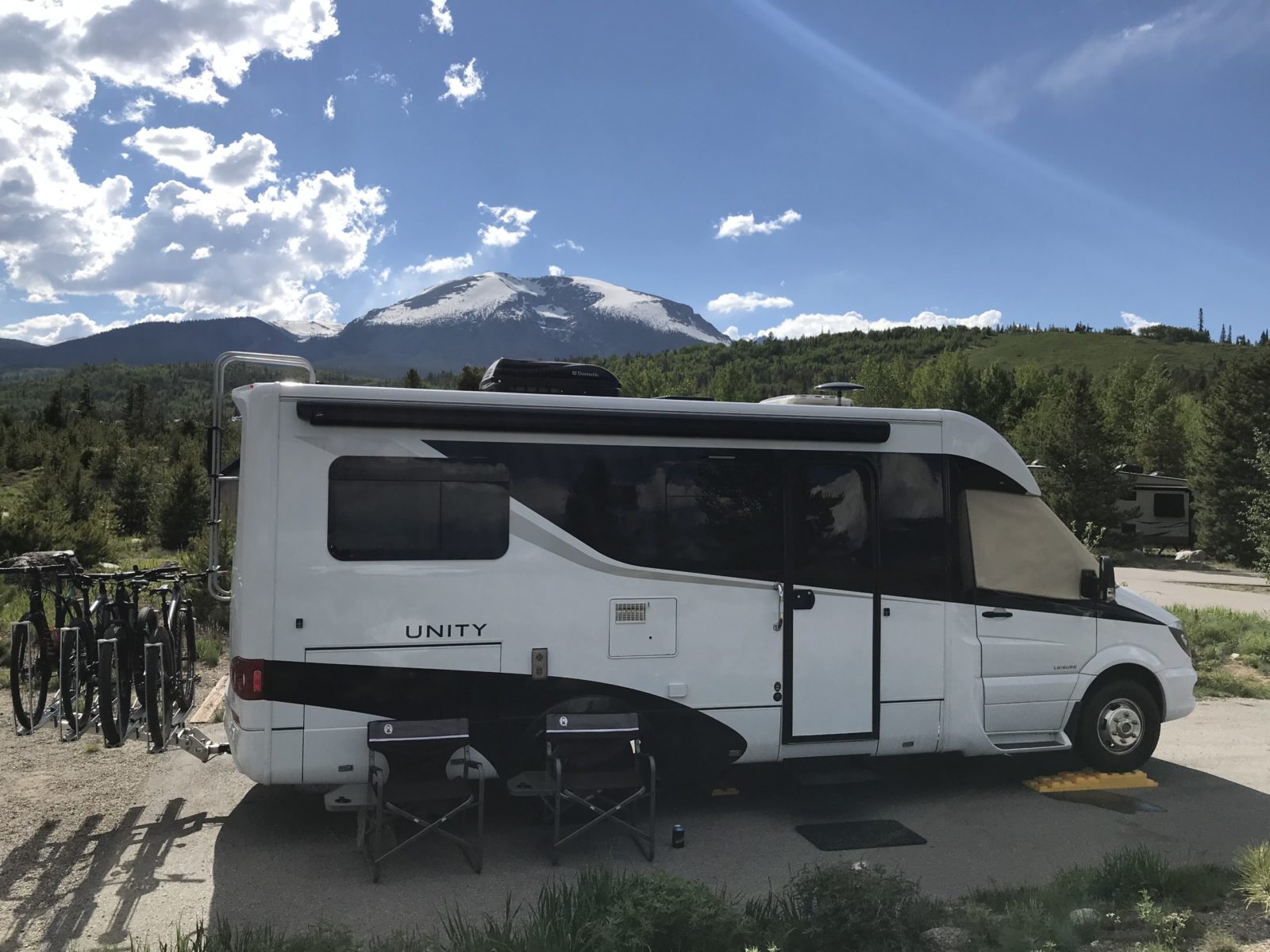
Security
Some racks provide built-in security or lock mechanisms for securing your bikes. These built-in systems are great, but extra locks or cables are a low-cost option that can help ensure the security of your bike and provide some peace of mind. Don’t be cheap when it comes to securing your bikes — a cheap lock is exactly that… cheap and most likely easily broken. Good locks can cost a few hundred dollars, but when securing thousands of dollars worth of bikes, it adds that extra sense of security for you and the bikes. Regardless, if someone really wants your bikes and has the time, most locks can be beaten, but hopefully the thieves are looking for an easy target and will move on. I carry both wheel locks, a cable and heavy chain type lock… basically three separate locking systems. Many times I will also cover the bikes with a cover to make them less tempting. Hopefully with the three different locks, anyone wishing to score a bike or two will move on to a simpler target.
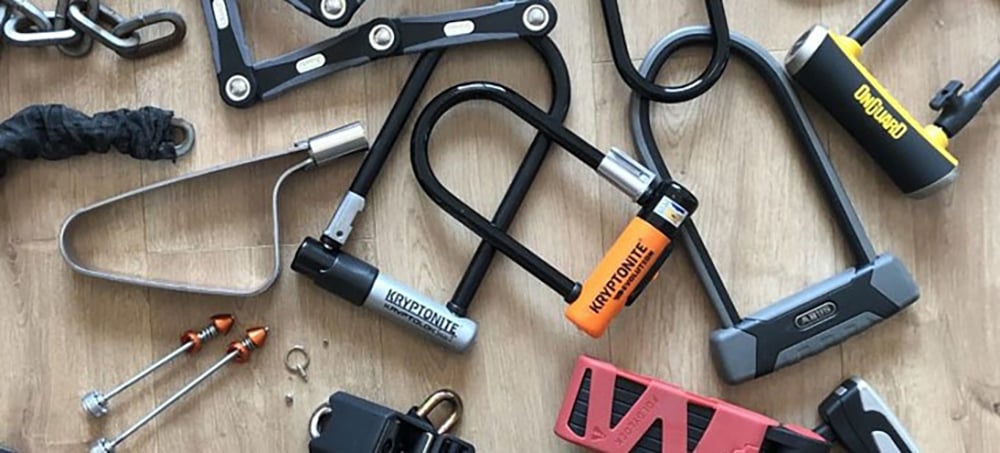
Suggestions
I’m sure others have their own suggestions or favorite racks, but these two listed here are what I prefer (we currently own both of the following racks). We’ve been using the 1Up for many years. The 1Up is lightweight and easy to use. I can easily move it from our RV to our SUV, and since we also purchased two of the add-on racks, we can carry four of our bikes at once when needed. The rack has built-in wheel lock options available and their double duty model can support up to 225lbs for 2 bikes, or 400lbs for 4 bikes. All our bikes fall in the 20lb range, so we are far from the overall limit of bike weight and the 1Up rack is RV certified.
Our other rack is a new addition. It is the Kuat Piston Pro X rack that is not even available for purchase until March 2022 (we were lucky enough to win this rack in a drawing at a cycling event we attended earlier in 2021). Kuat makes some really nice racks, and this one is no exception. This particular rack has a built-in light system that can be directly connected to the hitch light system of the LTV, thus providing additional stop and signal lights. It is also RV-certified and rated to carry 67lbs per bike. It is easily adjustable for various tire sizes and widths and has a great built-in security cable system.
Summary
As I mentioned in the beginning, there are lots of various rack options on the market these days. With more and more e-bike purchases, make sure to find a rack that fits your bikes, allows for easy loading and unloading, and supports the weight of your bikes. To clear the rear mast of your LTV you may need to add a hitch extension. I’m using an 8-inch extension for our racks. There is a lot of additional info available to help you make your choices and a good bike shop can help too.
Here are a couple of good resources.
Note: The views expressed in this post are those of the authors and do not necessarily reflect those of Leisure Travel Vans.


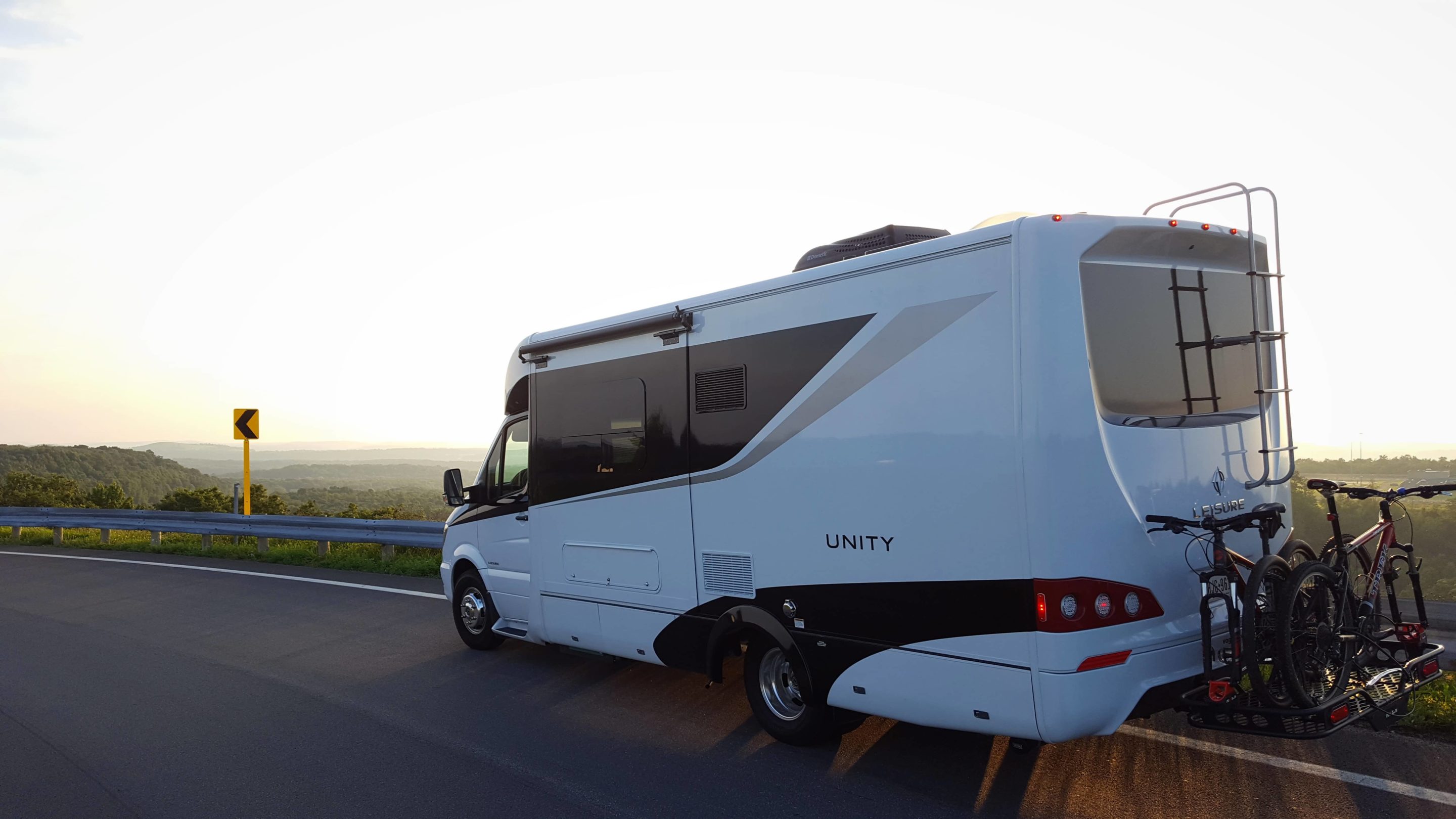
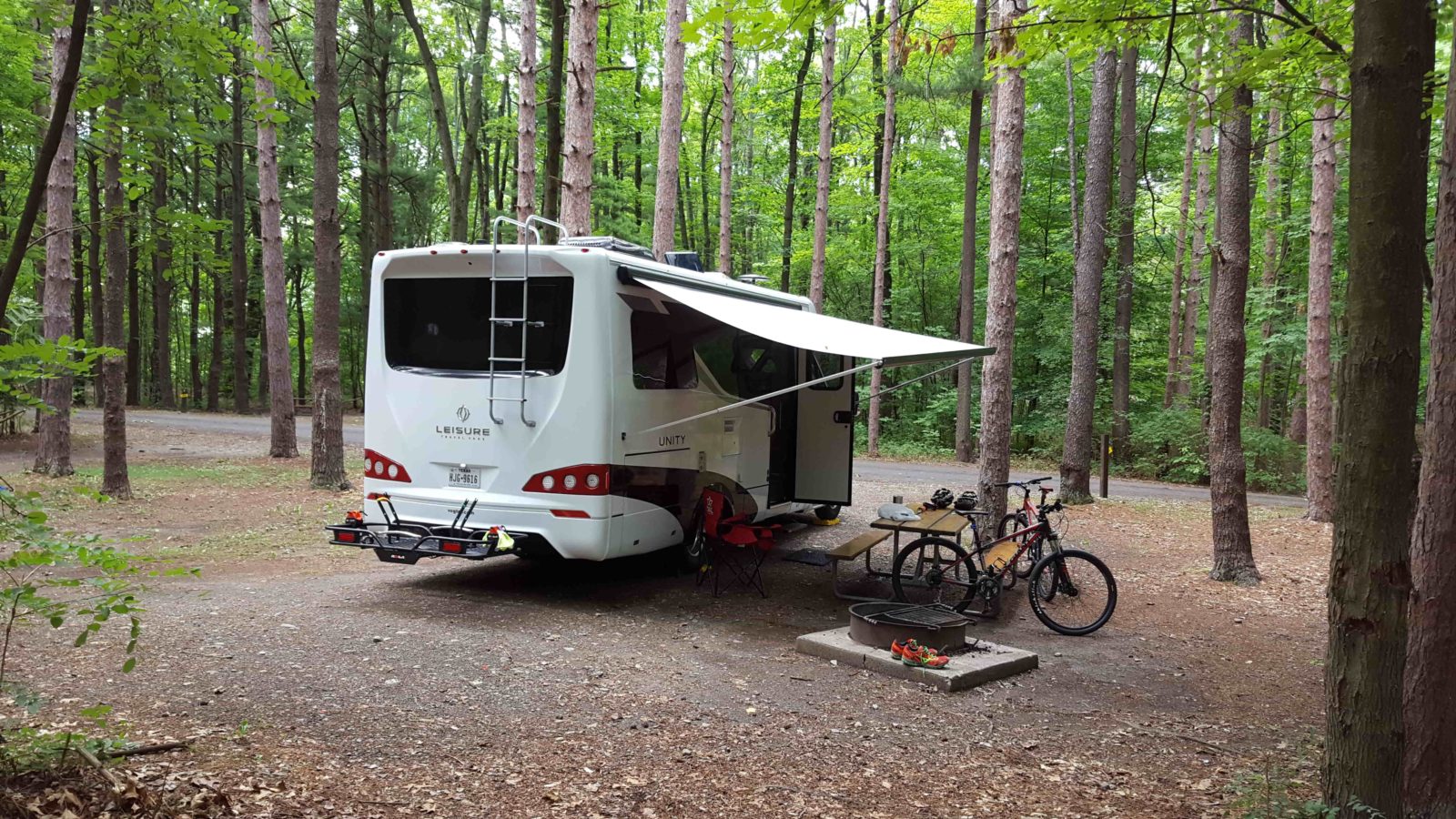
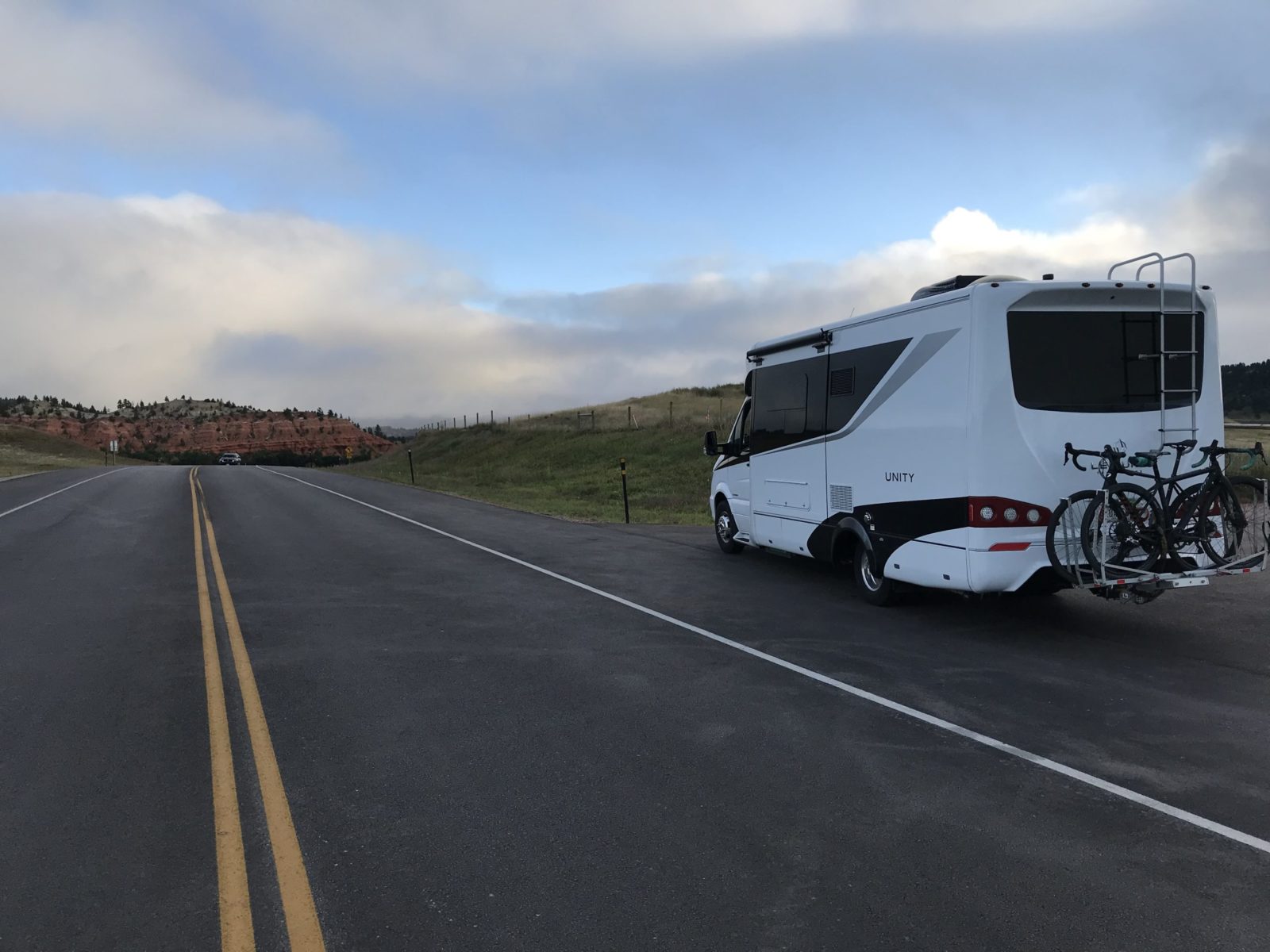

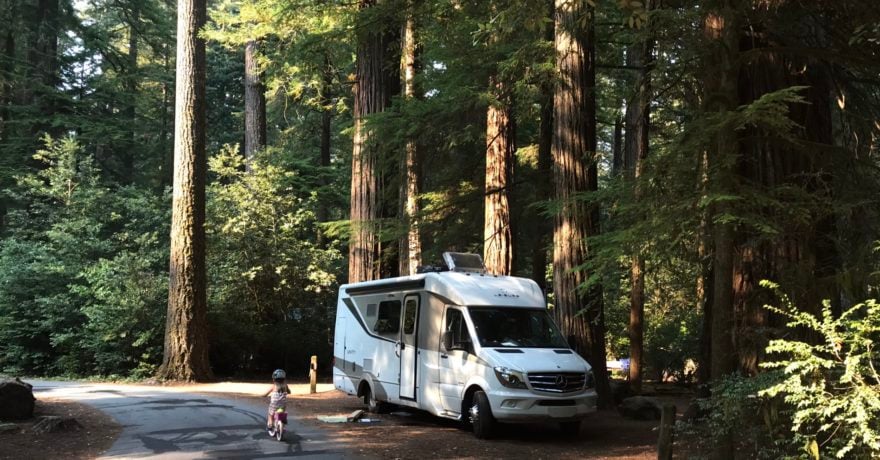

Comments